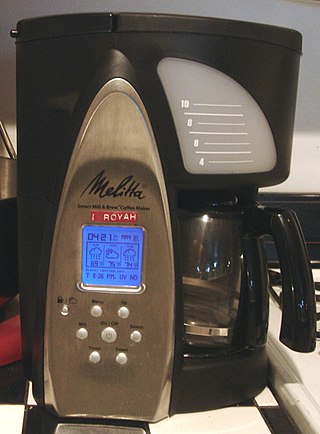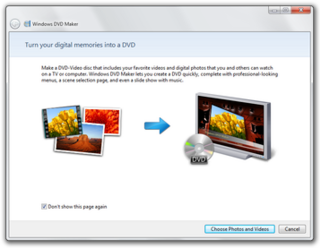
The Next-Generation Secure Computing Base is a software architecture designed by Microsoft which claimed to provide users of the Windows operating system with better privacy, security, and system integrity. NGSCB was the result of years of research and development within Microsoft to create a secure computing solution that equaled the security of closed platforms such as set-top boxes while simultaneously preserving the backward compatibility, flexibility, and openness of the Windows operating system. Microsoft's primary stated objective with NGSCB was to "protect software from software."
The Windows Hardware Engineering Community (WinHEC) is a series of technical conferences and workshops, where Microsoft elaborates on its hardware plans for Windows devices.
Windows Embedded Compact, formerly Windows Embedded CE, Windows Powered and Windows CE, is a discontinued operating system developed by Microsoft for mobile and embedded devices. It was part of the Windows Embedded family and served as the foundation of several classes of devices including the Handheld PC, Pocket PC, Auto PC, Windows Mobile, Windows Phone 7 and others.

The Smart Personal Objects Technology (SPOT) is a discontinued initiative by Microsoft to create intelligent and personal home appliances, consumer electronics, and other objects through new hardware capabilities and software features.

Windows Mobile is a discontinued mobile operating system developed by Microsoft for smartphones and personal digital assistants.

Windows Vista is a major release of the Windows NT operating system developed by Microsoft. It was the direct successor to Windows XP, released five years earlier, which was then the longest time span between successive releases of Microsoft Windows. It was released to manufacturing on November 8, 2006, and over the following two months, it was released in stages to business customers, original equipment manufacturers (OEMs), and retail channels. On January 30, 2007, it was released internationally and was made available for purchase and download from the Windows Marketplace; it is the first release of Windows to be made available through a digital distribution platform.

Windows Media Center (WMC) is a digital video recorder and media player created by Microsoft. Media Center was first introduced to Windows in 2002 on Windows XP Media Center Edition (MCE). It was included in Home Premium and Ultimate editions of Windows Vista, as well as all editions of Windows 7 except Starter and Home Basic. It was also available on Windows 8 Pro and Windows 8.1 Pro as a paid add-on. It was discontinued as of Windows 10 and the operating system also removes all of Windows Media Center during an upgrade from previous versions of Windows, although it can reportedly be unofficially reinstalled using a series of Command Prompt commands.
Microsoft Gadgets are lightweight single-purpose applications, or software widgets, that can sit on a Microsoft Windows user's computer desktop, or are hosted on a web page. According to Microsoft, it will be possible for the different types of gadgets to run on different environments without modification, but this is currently not the case.
Compared with previous versions of Microsoft Windows, features new to Windows Vista are numerous, covering most aspects of the operating system, including additional management features, new aspects of security and safety, new I/O technologies, new networking features, and new technical features. Windows Vista also removed some others.
A compositing manager, or compositor, is software that provides applications with an off-screen buffer for each window. The compositing manager composites the window buffers into an image representing the screen and writes the result into the display memory. A compositing window manager is a window manager that is also a compositing manager.

Windows Mobility Center is a component of Microsoft Windows, introduced in Windows Vista, that centralizes information and settings most relevant to mobile computing.

An ultra-mobile PC, or ultra-mobile personal computer (UMPC), is a miniature version of a pen computer, a class of laptop whose specifications were launched by Microsoft and Intel in Spring 2006. Sony had already made a first attempt in this direction in 2004 with its Vaio U series, which was only sold in Asia. UMPCs are generally smaller than subnotebooks, have a TFT display measuring (diagonally) about 12.7 to 17.8 centimetres, are operated like tablet PCs using a touchscreen or a stylus, and can also have a physical keyboard. There is no clear boundary between subnotebooks and ultra-mobile PCs, but UMPCs commonly have major features not found in the common clamshell laptop design, such as small keys on either side of the screen, or a slide-out keyboard.
The development of Windows Vista began in May 2001, prior to the release of Microsoft's Windows XP operating system, and continued until November 2006, where it was eventually released to manufacturing. Windows Vista was then released generally to retail on January 30, 2007.

Windows DVD Maker is a discontinued DVD authoring application developed by Microsoft introduced in Windows Vista, available in the Home Premium and Ultimate editions of Windows Vista for users to create slideshows and videos for playback on media devices including DVD players and the Xbox 360 home video game console. It is also available in the Home Premium, Professional, Enterprise, and Ultimate editions of Windows 7, but it is no longer available as of the release of Windows 8.

The Windows System Assessment Tool (WinSAT) is a module of Microsoft Windows Vista, Windows 7, Windows 8, Windows 8.1, Windows 10, and Windows 11 that is available in the Control Panel under Performance Information and Tools (except in Windows 8.1, Windows 10, and Windows 11). It measures various performance characteristics and capabilities of the hardware it is running on and reports them as a Windows Experience Index (WEI) score. The WEI includes five subscores: processor, memory, 2D graphics, 3D graphics, and disk; the basescore is equal to the lowest of the subscores and is not an average of the subscores. WinSAT reports WEI scores on a scale from 1.0 to 5.9 for Windows Vista, 7.9 for Windows 7, and 9.9 for Windows 8, Windows 8.1, Windows 10, and Windows 11.
Windows Display Driver Model is the graphic driver architecture for video card drivers running Microsoft Windows versions beginning with Windows Vista.
Windows Vista has many significant new features compared with previous Microsoft Windows versions, covering most aspects of the operating system.

Windows Speech Recognition (WSR) is speech recognition developed by Microsoft for Windows Vista that enables voice commands to control the desktop user interface, dictate text in electronic documents and email, navigate websites, perform keyboard shortcuts, and operate the mouse cursor. It supports custom macros to perform additional or supplementary tasks.
Some of the new features included in Windows 7 are advancements in touch, speech and handwriting recognition, support for virtual hard disks, support for additional file formats, improved performance on multi-core processors, improved boot performance, and kernel improvements.
Windows Desktop Gadgets is a discontinued widget engine for Microsoft Gadgets. Desktop Gadgets have been replaced by Windows 10 Taskbar Widgets. It was introduced with Windows Vista, in which it features a sidebar anchored to the side of the desktop. Its widgets can perform various tasks, such as displaying the time and date. In Windows Vista, the widgets are restricted to a sidebar but in Windows 7, they can be freely moved anywhere on the desktop.










